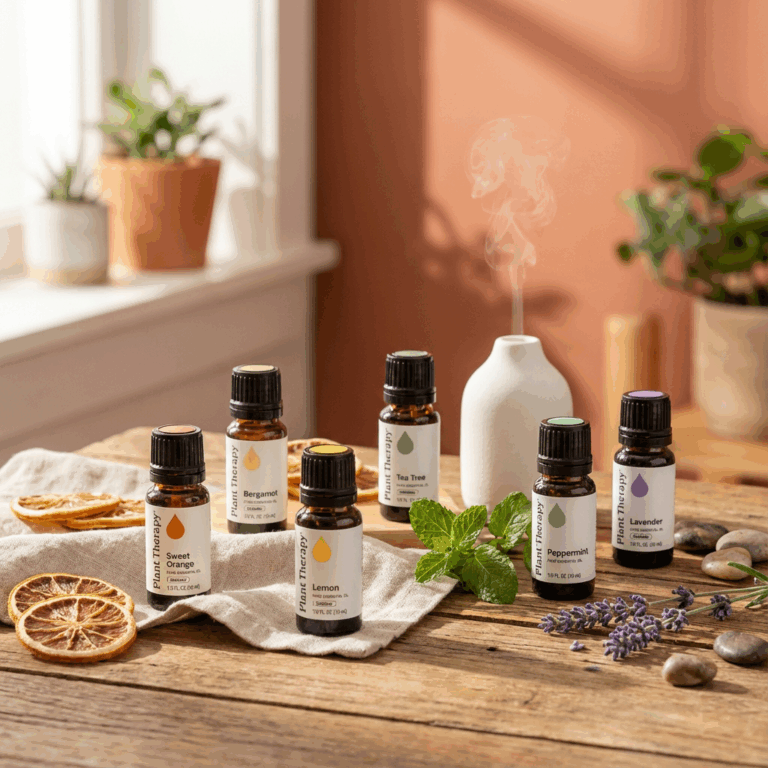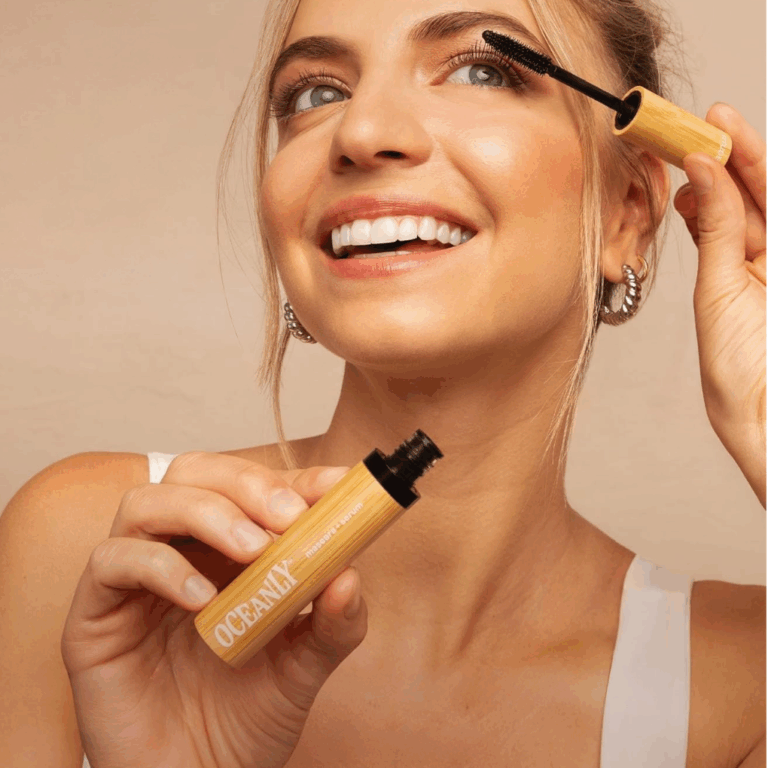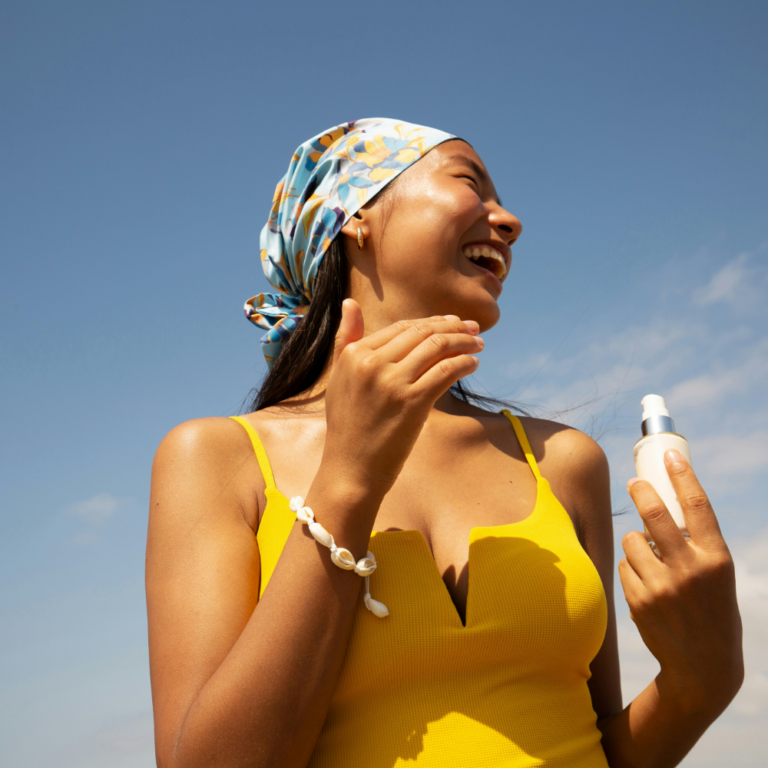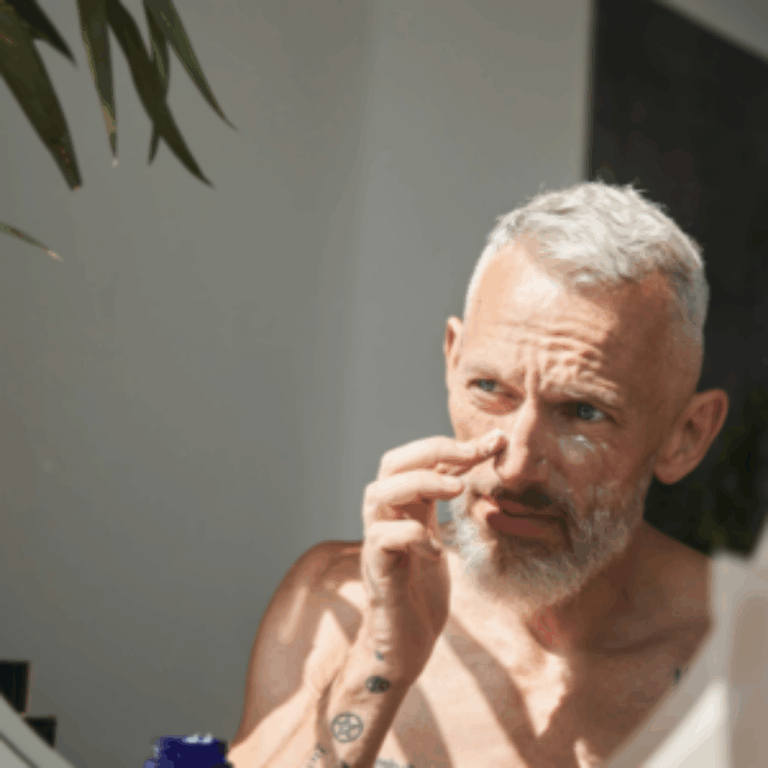Harvard Health highlights that the average woman uses around 12 personal care products each day1, many of which contain a mix of chemical ingredients—from cleansers and conditioners to makeup and fragrance. Beyond what’s inside the bottle, there’s also the issue of what’s outside it: packaging.
The beauty industry produces over 120 billion packaging units every year, and much of its plastic ends up in landfills or the ocean.2 But there’s hope—eco-friendly beauty brands are rethinking everything from ingredients to packaging, offering more sustainable ways to care for your skin and the planet.
In this guide, we’ll explore a range of sustainable beauty options that aim to reduce plastic waste—the main culprit behind microplastic pollution—while still delivering results you can feel good about. Not every product is 100% plastic-free, but each represents a step toward less waste and more thoughtful choices.
Understanding Microplastics in Beauty Products
Let’s talk about microplastics—tiny plastic particles (smaller than 5mm) that are still causing big problems. While countries like the U.S., the UK, and Canada have banned microbeads in rinse-off products like face scrubs and body washes, the beauty industry hasn’t exactly washed its hands of plastic. Microplastics are still commonly used in leave-on products, including moisturizers, sunscreens, foundation, mascara, shampoos, and conditioners.
These ingredients aren’t always prominent, but if you scan the label and spot things like polyethylene (PE), polypropylene (PP), polyacrylate, or nylon-12, you’re looking at potential microplastic content. They’re often added for texture, film-forming, or mattifying effects—but unfortunately, once they’re rinsed off or absorbed into our environment, they stick around.
So… where do they go?
Even if you’re not scrubbing with microbeads anymore, many of these plastic ingredients still end up going down the drain. The problem? Wastewater treatment plants can’t fully filter them out. From there, they enter waterways and oceans, where they’re consumed by fish and other wildlife—and eventually find their way back to us. Scientists have detected microplastics in human blood, lungs, and even placentas. Not quite the kind of beauty routine we’re aiming for.
While packaging tends to get most of the blame (rightfully so—hello, 120 billion units a year), formulations are still flying under the radar when it comes to plastic pollution.
Quick Stat: Microplastics Are Still in the Mix
A 2020 report by the Plastic Soup Foundation found that over 87% of cosmetic products from major brands still contained microplastic ingredients—even after the microbead ban went into effect.3
Why Switch to Eco-Friendly Beauty Products?
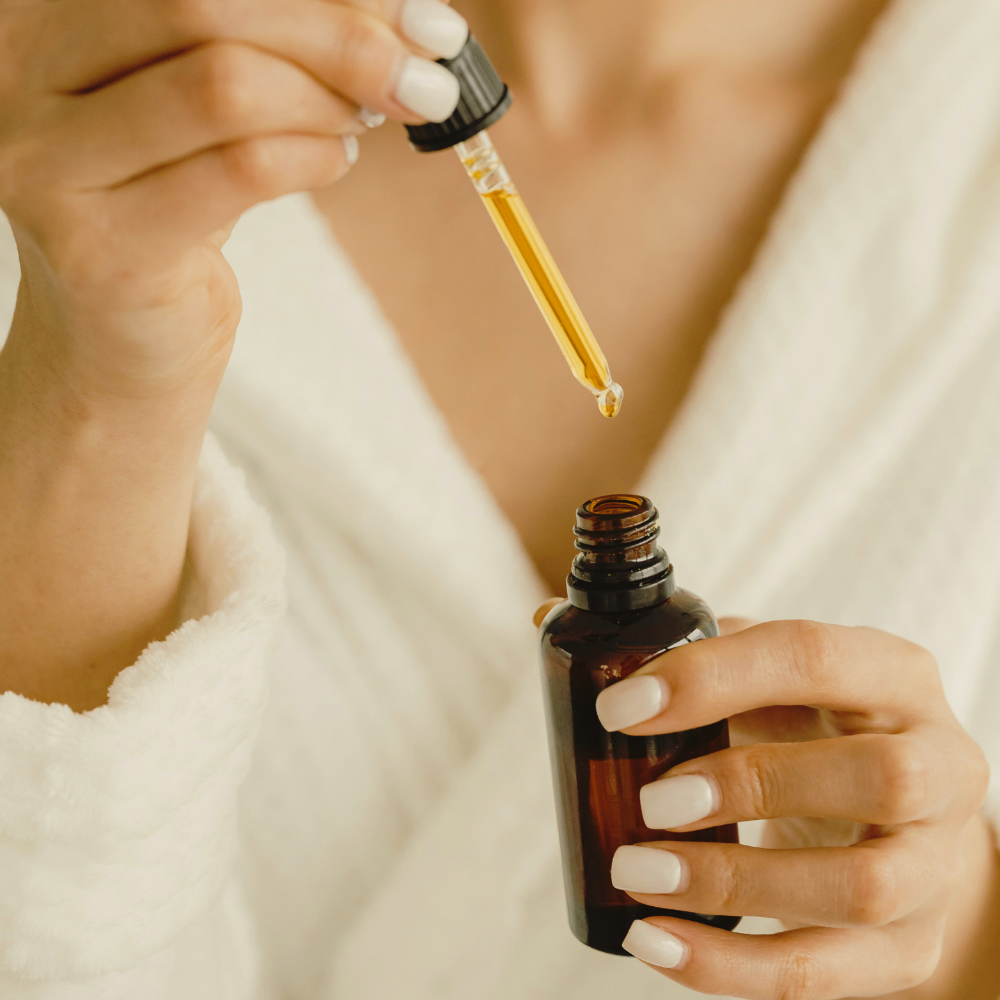
Swapping out conventional beauty products for eco-friendly alternatives isn’t just a trend—it’s a smart, meaningful way to reduce your impact on the planet and give your skin some well-deserved love. Let’s break down the real benefits of going the greener route:
- Shrinking Your Microplastic Footprint: One of the biggest wins? You stop unknowingly adding microplastics to the environment every time you wash your face or apply lotion. Choosing products free from synthetic polymers and plastic fillers means fewer plastic particles ending up in waterways, soil, and, eventually, your dinner plate. Eco-friendly brands are much more transparent about their ingredients and often actively avoid anything that sticks around for centuries.
- Better for Your Skin (and the Rest of You): Eco-conscious beauty products typically skip the harsh chemicals, synthetic fragrances, and petroleum-derived ingredients that conventional options rely on. Instead, you get plant-based formulas rich in antioxidants, natural oils, and gentle botanicals. That means less irritation, fewer allergic reactions, and a lower toxic load overall. Think glow, not guesswork.
- Supporting Brands That Actually Care: When you choose eco-friendly beauty, you’re also voting with your dollars. Many sustainable brands go beyond just clean ingredients—they use ethical sourcing, pay fair wages, avoid animal testing, and actively reduce their environmental footprint. You’re supporting businesses that want to do good, not just look good.
- Lower Carbon Footprint from Start to Shelf: From ingredient harvesting to packaging and shipping, sustainable beauty products often come with a smaller carbon footprint. Many brands use renewable energy in production, offset emissions, or reduce transportation impacts by choosing local ingredients or waterless formulas. It’s a cleaner beauty cycle, start to finish.
- Protecting the Ocean (One Cleanser at a Time): Every plastic-free product you use is one less contributor to the ocean’s growing microplastic crisis. Marine life already faces enough stress—from warming waters to chemical runoff—without having to ingest plastic particles from our shampoo. Eco-friendly choices help preserve biodiversity and keep aquatic ecosystems healthier for generations.
Quick Stat: Microplastic Mayhem
Researchers estimate that 11 million metric tons of plastic enter the ocean annually4, and personal care products—especially those with microplastic ingredients—contribute to the problem. Even tiny plastic particles can disrupt fish behavior, damage coral reefs, and accumulate up the food chain, threatening ecosystems and human health.
Beauty with a Conscience: Eco-Friendly Brands Leading the Way
In 2025, the beauty industry is undergoing a much-needed transformation—rethinking everything from packaging to ingredients in the name of sustainability. While microplastics in cosmetics remain a concern, the shift goes far beyond that. Brands are embracing circular design, reducing water waste, and finding creative ways to repurpose natural by-products. These innovations, from dissolvable tablets to plantable packaging, prove that beauty can care for both people and the planet.
Antonym
Antonym Cosmetics is dedicated to sustainability and ethical practices in the beauty industry. It utilizes Ecocert-certified natural and organic ingredients, ensuring its products meet stringent environmental and quality standards. Its packaging reflects this commitment, with outer materials from FSC-certified paper sourced from responsibly managed forests.
Additionally, their makeup brushes are certified vegan by the Vegan Awareness Foundation, contain no animal products or by-products, and are not tested on animals. Antonym Cosmetics is also Leaping Bunny certified, affirming that they do not conduct or commission animal testing for their products.
ĀTHR Beauty
ĀTHR Beauty is dedicated to sustainability, with eco-friendly packaging made from recyclable aluminum and FSC-certified paper. Their clean, non-toxic products use organic, fair-trade, and non-GMO ingredients, and the brand bans over 2,700 harmful chemicals.
All products are vegan and cruelty-free, and they ensure ethical production with safe working conditions and fair wages. Additionally, ĀTHR Beauty donates 1% of its purchases to environmental causes, reinforcing their commitment to both people and the planet.
Axiology
Axiology is all about sustainability, offering 100% plastic-free, vegan products that do more with less. Their multi-use Balmies can be used on eyes, lips, and cheeks, making them a simple, low-waste swap for your beauty routine. Each crayon is wrapped in recyclable paper and made with only nine natural ingredients.
Even the packaging tells a story—it’s crafted from recycled trash by a women’s cooperative in Bali, which supports environmental goals and fair wages. According to its 2025 Sustainability Report, its efforts have prevented over 25 tons of plastic from entering landfills. Their mission is clear: zero waste, clean beauty that’s gentle on people, animals, and the planet.
Elate Beauty
Elate Beauty, founded in 2014 by Melodie Reynolds, is committed to revolutionizing the beauty industry through sustainable and ethical practices. The brand focuses on creating high-performing, vegan, and cruelty-free cosmetics that are refillable and packaged sustainably, aiming to reduce waste and promote environmental responsibility.
Elate’s dedication to sustainability is evident in their achievements, including saving over 697,000 plastic packages from landfills through their recycling program, growing more than 157,500 gardens with seed paper packaging, planting over 22,000 trees from customer orders, and donating upwards of $27,000 to social and environmental causes in 2020.
Ethique Beauty
Ethique is a beauty brand dedicated to sustainability, offering products free from plastic and microplastics. Their packaging is designed to break down completely in home compost within 12 months, minimizing environmental impact. The company sources clean ingredients through verified sustainable supply chains, ensuring ethical production practices.
As part of their commitment, 2% of every sale is donated to environmental and social charities annually, and they plant one tree for every order, having planted over 700,000 trees to date. Ethique’s efforts have earned them recognition as one of the highest-scoring B Corps globally, reflecting their dedication to social and environmental responsibility.
The Detox Market
The Detox Market is deeply committed to sustainability. It curates high-quality, clean beauty products and focuses on reducing plastic waste. The company works with CleanHub to achieve plastic neutrality, ensuring that for every pound of plastic sold, an equivalent amount is collected and repurposed, preventing it from entering oceans and landfills.
The Detox Market’s stores serve as recycling hubs, partnering with TerraCycle to recycle hard-to-process packaging from any brand. The company prioritizes products with sustainable packaging, opting for refillable systems and materials like glass and aluminum, which are more easily recyclable.
.
Spotlight on Companies Using Innovative Plastic Alternatives
Circumference NYC
Sustainable skincare meets circular innovation.
Circumference is a New York–based skincare brand pushing the boundaries of sustainable beauty. Through their Waste-Not Sourcing Initiative, they partner with local farms and vineyards to upcycle agricultural byproducts—like discarded grape leaves—into powerful, plant-based skincare ingredients. These nutrient-rich extracts are returned to the soil after use, creating a closed-loop system. With recyclable glass packaging and a deep commitment to transparency, Circumference is redefining what eco-luxury looks like—without the plastic footprint.
Mono Skincare
A new era of skincare, no plastic needed.
Mono Skincare is transforming how we think about beauty routines with innovative dissolvable tablets. Packaged in compostable paper sachets, these tablets are activated by adding water to their reusable glass bottles, delivering a full-strength product without the need for single-use plastic. By eliminating over 90% of water typically found in conventional skincare products, Mono reduces plastic waste and cuts down on carbon emissions, setting a new standard for sustainable beauty.
Haeckels
Packaging that’s as sustainable as it is innovative.
Haeckels is making waves with their “Packing for the Planet” initiative, and it’s not just about reducing waste—it’s about rethinking how we use materials. They’ve turned to mycelium (yep, the root system of fungi!) to create packaging that’s fully compostable. Along with this mycelium magic, they also use Vivomer, a biopolymer that biodegrades in under a year, and Sylvicta paper, a translucent, compostable option that breaks down in just weeks.
The best part? Their commitment to sustainability doesn’t stop at the product—customers are encouraged to reuse, recycle, or compost, making it easy to join the mission to reduce plastic waste. Haeckels is proof that luxury and eco-consciousness can go hand in hand!
SproutWorld
Turning everyday items into green initiatives.
SproutWorld is on a mission to inspire sustainable actions through innovative products. Their flagship offering, the plantable pencil, features a seed capsule at the end—write with it, then plant it to grow flowers, herbs, vegetables, or trees. Beyond pencils, they’ve expanded to plantable makeup liners designed with the environment in mind.
Committed to transparency, SproutWorld has sold over 80 million plantable pencils globally and continues to set ambitious sustainability goals, including achieving Net-Zero emissions by 2029. By choosing SproutWorld, you’re supporting a company that balances people, planet, and profit, making sustainability a rewarding part of daily life.
How to Read Beauty Labels
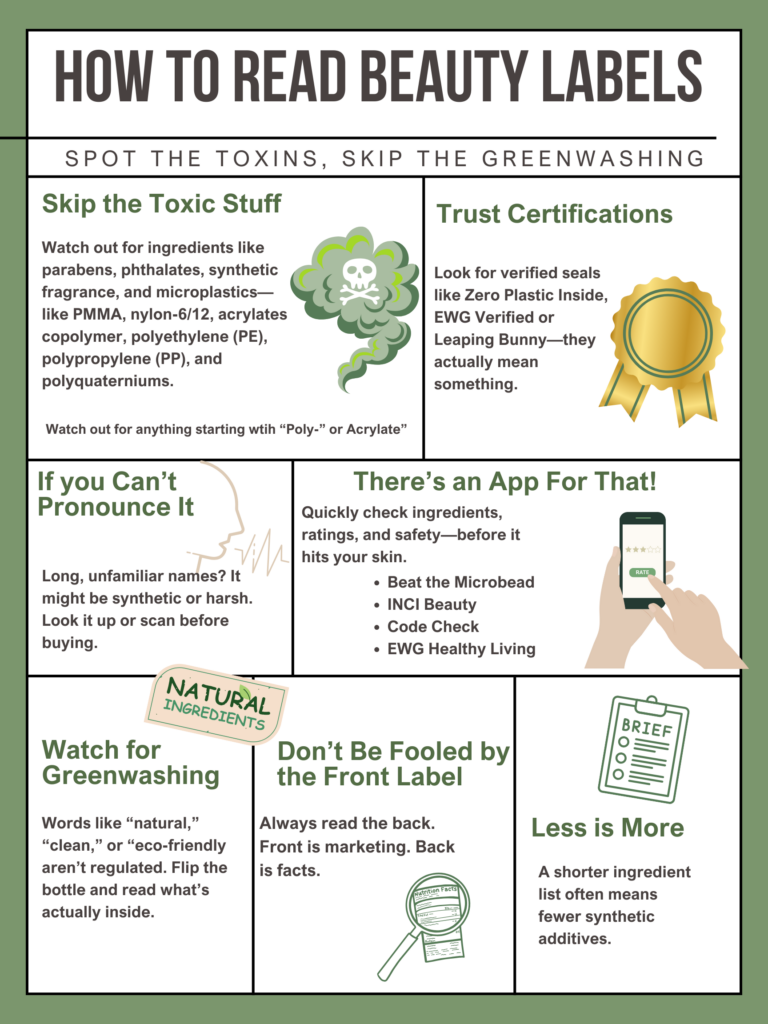
Reading a beauty label shouldn’t feel like decoding ancient script—but when it comes to spotting microplastics, things can get a little murky. Companies have become very good at slipping synthetic polymers into ingredient lists under less-than-obvious names, and even better at marketing their products as “clean” or “natural” when they’re anything but.
Here’s how to cut through the confusion and figure out what you’re really putting on your skin.
Common Microplastic Ingredients (and What They’re Called Instead)
Microplastics don’t always go by the name “microplastic.” Instead, they hide behind chemical-sounding aliases that may sound science-y or safe—but often point to plastic-based ingredients. Watch out for:
- Polyethylene (PE): Commonly used in packaging (like plastic films and bottles), PE isn’t typically classified as a microplastic in that form. However, it can be considered a microplastic when used as tiny solid particles—such as exfoliating beads—in personal care products.
- Polypropylene (PP): Like PE, PP is widely used in packaging and textiles. While it’s not inherently a microplastic, it can qualify as one when included as micro-sized particles in cosmetic formulations.
- Polymethyl Methacrylate (PMMA): Often used in makeup for smoothness or light-diffusing effects, PMMA is a non-biodegradable synthetic polymer and typically considered a microplastic when used in solid particle form.
- Nylon-6 / Nylon-12: These synthetic polyamides are frequently added to beauty products for their texture-enhancing properties. In most cases, they are regarded as microplastics—especially when not biodegradable.
- Acrylates Copolymer / Crosspolymer: Used to create a film or thicken cosmetic products, these are often synthetic microplastic ingredients when present as solid particles that do not dissolve or degrade.
- Polyquaterniums: While these aren’t always classified as microplastics, they are synthetic and non-biodegradable, raising concerns about their persistence in the environment.
- Anything starting with “Poly-” or “Acrylate-”: Many synthetic polymers in this family may function as microplastics depending on their particle size, form, and environmental persistence.
These ingredients act as binders, thickeners, film-formers, mattifiers, and texturizers—but plant-based or mineral alternatives can achieve similar results without adding to the plastic problem.
Greenwashing: The Beauty Industry’s Favorite Concealer (pun intended)
Terms like natural, clean, eco-conscious, and green beauty don’t mean anything legally. A product can be labeled “natural” and still contain synthetic polymers, fragrances, and non-biodegradable preservatives. Look beyond the marketing language and head straight to the ingredients list. If the formula reads more like a chemistry quiz than something you’d feel safe using daily, it’s worth questioning.
Helpful Apps to Make Label-Checking Easier
If scanning ingredients line-by-line sounds like a lot, these apps can help flag problematic ingredients for you, making the process much easier and less overwhelming:
Beat the Microbead – This app is designed to spot cosmetics’ microplastics. It quickly scans product labels to identify those pesky plastic particles, helping you avoid products that contribute to environmental pollution. A quick scan lets you know if your favorite scrub or face wash is filled with tiny plastic beads.
INCI Beauty – This app decodes ingredients and rates their safety, providing clear information about the environmental impact and health risks of the products you use. It also gives you a rating, so you can easily see how eco-friendly or skin-friendly your products are, based on their ingredients.
CodeCheck – A versatile app that identifies microplastics, allergens, and harmful chemicals, offering a comprehensive breakdown of the products you use. You can scan barcodes or search for items by name, and the app will flag any potentially harmful substances, making it easier to make informed, eco-conscious choices.
Environmental Working Group – EWG’s Healthy Living App is a comprehensive tool designed to help consumers make informed decisions about their food, personal care, and cleaning products. By scanning barcodes or searching the app’s extensive database, users can access ratings and information on over 120,000 items, evaluating nutritional content, ingredient safety, and potential health concerns.
Just scan the barcode and let the app do the detective work for you. These tools make ingredient transparency a breeze, helping you avoid harmful chemicals, microplastics, and allergens without the headache of manual label reading.
Look for Trustworthy Certifications
When navigating the world of beauty products, it’s not always easy to know which ones truly prioritize sustainability and safety. That’s where third-party certifications come in—they act as reliable stamps of approval that go the extra mile in confirming products are free from microplastics, unnecessary synthetics, and other harmful ingredients. Here’s a breakdown of some of the most trustworthy certifications you can look for:
- Plastic Soup Foundation’s “Zero Plastic Inside” label: This label ensures that items are free from microplastics. Although it is primarily focused on cosmetics and personal care products, the general principles of avoiding plastic pollution can extend to other types of consumer goods in some cases.
- COSMOS Organic / COSMOS Natural: These certifications cover cosmetics, skincare, and personal care products, but they can also be applied to other sectors like food and textiles. The focus is on organic and natural ingredients, so while they are most commonly seen in beauty products, they can also apply to other products.
- Ecocert: Ecocert is used across multiple industries, including cosmetics, skincare, cleaning products, and even textiles. It’s not limited to beauty and personal care; it applies to any product seeking organic or eco-friendly certification.
- NATRUE: NATRUE focuses mainly on cosmetics, skincare, and personal care products, ensuring they meet natural and organic standards. Like the others, it is more specific to beauty and personal care but can also be seen in some wellness-related sectors.
- Ecolabel (EU): The EcoLabel certification applies to a broad spectrum of products, not just cosmetics. It covers everything from cleaning products to textiles, appliances, and paper. For cosmetics, it ensures that the product meets specific environmental standards, but it can also be found in other categories, promoting sustainability across industries.
Love Your Face, Love the Planet: Eco-Friendly Swaps for Your Beauty Routine

A little self-care can go a long way—for your skin and the environment. If you’re already showing your face some love, why not extend that care to the products you use? From your morning moisturizer to your evening toothpaste, there are thoughtful swaps that cut down on plastic waste without compromising results.
Skincare: Clean Ingredients, No Plastic Fillers
Skincare is a great place to begin. Many traditional products sneak in plastic-derived ingredients like polyethylene, acrylates, or carbomers for texture or longevity. Choosing alternatives made with simpler, natural formulas helps you care for your skin and avoid washing plastics down the drain.
Swap It Out:
- Face cleansers: Look for oil cleansers, cream cleansers, or foaming powders made with plant-based ingredients. Bonus points for refillable packaging.
- Moisturizers and serums: Choose formulas that use natural humectants like aloe vera, glycerin (plant-derived), and hyaluronic acid sourced from fermentation—not plastic.
- Exfoliants: If it feels gritty, check the label. Microbeads are mostly banned, but plastic-like particles still show up in some scrubs. Switch to biodegradable exfoliants like jojoba beads, rice powder, or fruit enzymes instead.
- Sheet masks: Many are made from synthetic fibers and come individually wrapped in plastic. Try reusable silicone masks or masks made with compostable plant fibers and clean formulas.
A Quick Check: Look for brands that highlight biodegradable formulas, use glass or aluminum packaging, and list botanical ingredients first on their INCI list. You’re probably on the right track if you can pronounce an ingredient and picture it growing somewhere.
Makeup: Beauty Without the Microplastics
The makeup aisle might be small, but its microplastic footprint isn’t. Many conventional cosmetics use plastic-based ingredients to create that smooth, long-lasting, or shimmering finish. Think foundations with a silky feel, lipsticks that “stay all day,” or eyeshadows packed with glitter. Unfortunately, a lot of those effects come from synthetic polymers—and yes, even some of that sparkle comes from plastic-based glitter.
Swap It Out:
- Lipsticks and glosses: Choose balms and tints made with cocoa butter, jojoba oil, and natural waxes—and skip anything with “poly” in the ingredient list.
- Foundation & BB creams: Choose brands with mineral pigments and nourishing plant oils instead of silicone-heavy formulas. Bonus if they offer refillable compacts or tubes.
- Mascara & eyeliner: Look for water-based or wax-based options that skip polyacrylates. Some brands now offer fully compostable mascara wands, too.
- Glitter: Traditional glitter is microplastic in a shiny disguise. Instead, go for glitter made from cellulose or mica, like The Good Glitter.
Heads Up: “Long-wearing” and “smudge-proof” are often code for plastic-heavy. If you love that look, there are still alternatives—but they may take some experimenting to find the right fit. Some eco-friendly formulas are just as effective and won’t stick around in the ocean for hundreds of years.
Hair Care & Body Wash: Clean Routines, Clean Oceans
Shampoos that foam like a latte, conditioners that promise “glass hair,” and body washes with sparkles or exfoliating beads are all prime suspects in the microplastic lineup. Even though microbeads have been banned in many countries in rinse-off products, that doesn’t mean all wash-off beauty products are plastic-free.
Polymers are still used to stabilize formulas, add slip and shine, and create that satisfying lather. But they rinse off you and go straight down the drain… and many don’t break down.
Swap It Out:
- Shampoo & conditioner: Go for bars or refills made with plant-based cleansers like coco-glucoside instead of synthetic foaming agents. Conditioner bars with nourishing butters (like shea or cupuaçu) work just as well—sometimes better—without the waste.
- Body wash: Many liquid washes use microplastic stabilizers. Switch to bar soap made with saponified oils or a refillable gel made with clean ingredients.
- Hair styling products: Gels, mousses, and sprays are often loaded with plastic polymers. Try styling creams made with flaxseed gel, aloe vera, or sugar-based fixatives.
Oral Care: Smiles Without the Synthetic Stuff
Toothpaste and mouthwash might seem harmless, but they have a surprisingly plastic problem. While microbeads were banned in many countries, some toothpastes still contain plastic-like thickening agents and synthetic polymers—especially the ones promising ultra-whitening or gel-like texture.
And let’s not forget the plastic packaging. Between tubes, caps, and floss containers, oral care can be a landfill repeat offender. But with a few easy swaps, it’s possible to keep your routine minty-fresh and microplastic-free.
Swap It Out:
- Toothpaste: Try toothpaste tablets or powders in glass jars or metal tins. Many are made with ingredients like baking soda, bentonite clay, and essential oils—no unnecessary fillers.
- Floss: Skip nylon floss and opt for compostable silk or plant-based floss coated in candelilla wax.
- Mouthwash: Ditch plastic bottles and go for tablets you dissolve in water. Same clean feel, way less waste.
- Toothbrush: Bamboo handles are compostable, and some brands now offer replaceable heads to reduce plastic use even further.
Small Switch, Big Impact: The average person throws away 300 plastic toothbrushes in their lifetime.5 Multiply that by millions? That’s a whole lot of plastic bristles that never break down.
This Has Been About Eco-Friendly Beauty Products
The beauty industry has a long road ahead, but that doesn’t mean we’re stuck with guilt and glitter in our pores. Choosing eco-friendly beauty products isn’t about giving up what we love; it’s about reimagining beauty in a world that deserves better. Microplastics might be small, but their impact is far-reaching. Every switch you make—swapping a single bar of soap or choosing plastic-free mascara—adds up and makes a real difference.
References
- Harvard Health Publishing. (2020, April 1). Toxic beauty. Harvard Health. Retrieved April 6, 2025, from https://www.health.harvard.edu/womens-health/toxic-beauty ↩︎
- Pandey, D. (2025, March 28). Cosmetic packaging market insights. Towards Packaging. Retrieved April 5, 2025, from https://www.towardspackaging.com/insights/cosmetic-packaging-market ↩︎
- Plastic Soup Foundation. (2022, April 9). Almost 9 in 10 products from major cosmetics brands contain microplastics. Retrieved April 5, 2025, from https://www.plasticsoupfoundation.org/en/news/almost-9-in-10-products-from-major-cosmetics-brands-contain-microplastics ↩︎
- Ocean Conservancy. (n.d.). Plastics in the ocean. Retrieved April 6, 2025, from https://oceanconservancy.org/trash-free-seas/plastics-in-the-ocean/ ↩︎
- Serrano, M., & Roosevelt, M. (2019, June 14). The story of plastic toothbrushes. National Geographic. Retrieved April 6, 2025, from https://www.nationalgeographic.com/environment/article/story-of-plastic-toothbrushes ↩︎
